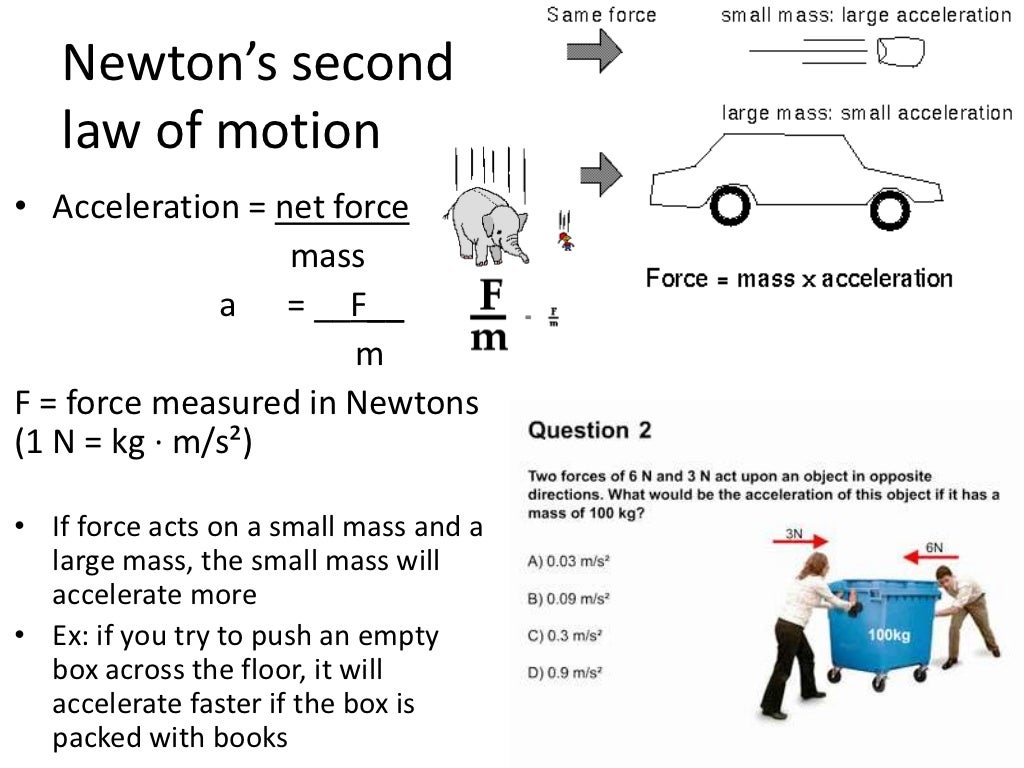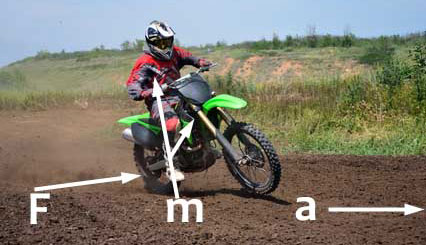

Our experience seems to agree with Aristotle's idea, that the "impetus" given to the ball is used up as it rolls. If we roll a ball across the floor, we know that it will eventually come to a stop, seemingly contradicting the First Law. Newton's first law states that any object at rest that is not acted upon by outside forces will remain at rest, and that any object in motion not acted upon by outside forces will continue its motion in a straight line at a constant velocity. The first law seems to be at odds with our everyday experience. His three laws of motion are the best known of these. This pushes the rocket upwards, without regard to the ground or the atmosphere.Lab 3 - Newton's Second Law Introduction Sir Isaac Newton put forth many important ideas in his famous book The Principia. Rockets work by producing a strong reaction force downwards using rocket engines. Third To every action there is always opposed an equal reaction or, the mutual actions of two bodies upon each other are always equal, and directed to contrary parts.

Newton's second law has also been regarded as setting out a research program for physics, establishing that important goals of the subject are to identify the forces present in nature and to catalogue the constituents of matter.

If the body's location as a function of time is s ( t ) into Newton's second law, an equation with predictive power can be written.
#Forces and newton ii law experiment free
For example, a body might be free to slide along a track that runs left to right, and so its location can be specified by its distance from a convenient zero point, or origin, with negative numbers indicating positions to the left and positive numbers indicating positions to the right. Its position can then be given by a single number, indicating where it is relative to some chosen reference point. The simplest case is one-dimensional, that is, when a body is constrained to move only along a straight line. Movement is represented by these numbers changing over time: a body's trajectory is represented by a function that assigns to each value of a time variable the values of all the position coordinates. The mathematical description of motion, or kinematics, is based on the idea of specifying positions using numerical coordinates. For instance, the Earth and the Sun can both be approximated as pointlike when considering the orbit of the former around the latter, but the Earth is not pointlike when considering activities on its surface. This is a reasonable approximation for real bodies when the motion of internal parts can be neglected, and when the separation between bodies is much larger than the size of each. Newton's laws are often stated in terms of point or particle masses, that is, bodies whose volume is negligible. 9.4 Momentum conservation and the third law.8.1 Thermodynamics and statistical physics.7 Relation to other formulations of classical physics.5.2 Rotational analogues of Newton's laws.Limitations to Newton's laws have also been discovered new theories are necessary when objects move at very high speeds ( special relativity), are very massive ( general relativity), or are very small ( quantum mechanics). In the time since Newton, the conceptual content of classical physics has been reformulated in alternative ways, involving different mathematical approaches that have yielded insights which were obscured in the original, Newtonian formulation. Newton used them to investigate and explain the motion of many physical objects and systems, which laid the foundation for classical mechanics. The three laws of motion were first stated by Isaac Newton in his Philosophiæ Naturalis Principia Mathematica ( Mathematical Principles of Natural Philosophy), originally published in 1687. If two bodies exert forces on each other, these forces have the same magnitude but opposite directions.When a body is acted upon by a force, the time rate of change of its momentum equals the force.A body remains at rest, or in motion at a constant speed in a straight line, unless acted upon by a force.These laws can be paraphrased as follows: : 49 Newton's laws of motion are three basic laws of classical mechanics that describe the relationship between the motion of an object and the forces acting on it.


 0 kommentar(er)
0 kommentar(er)
